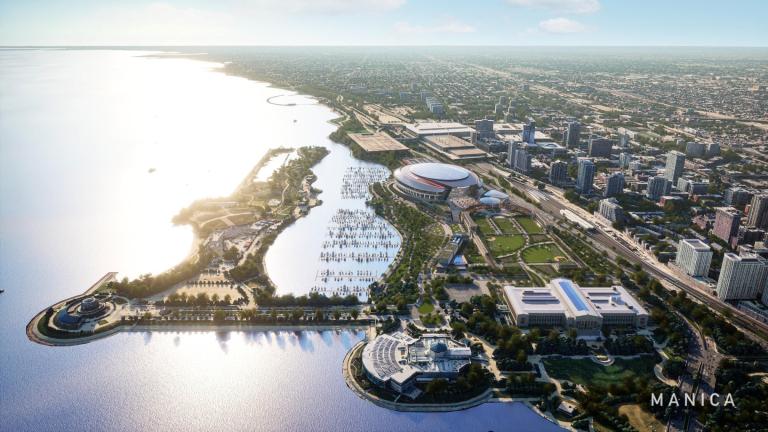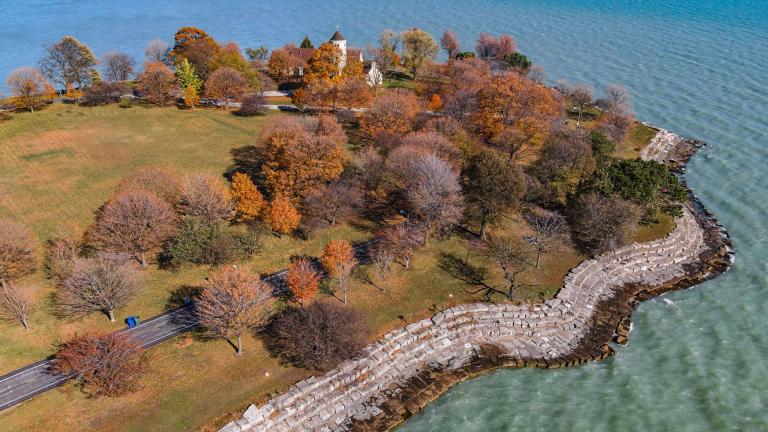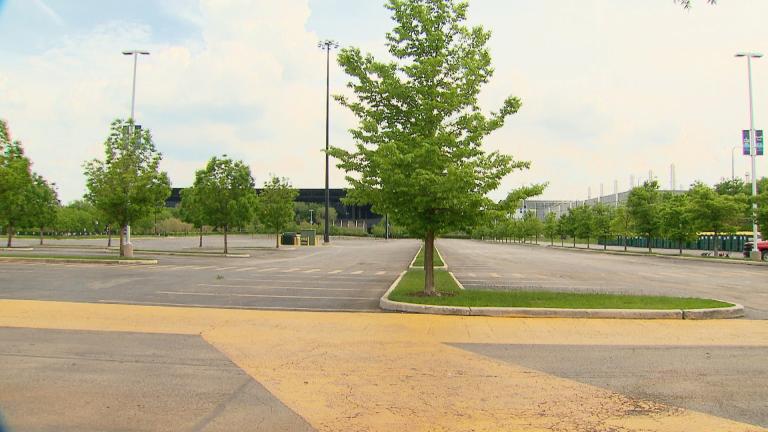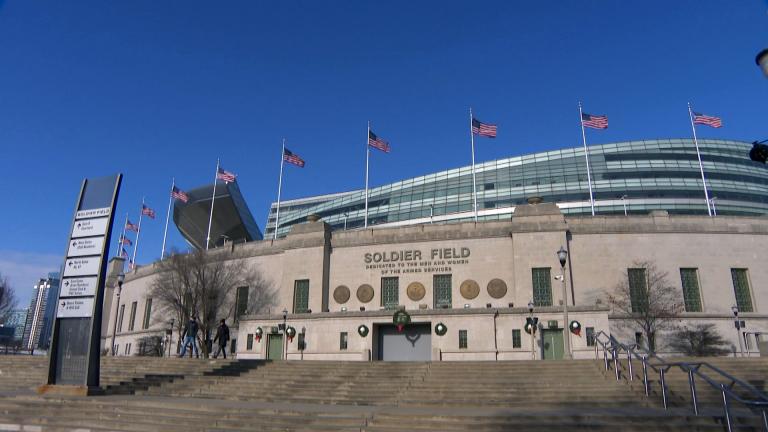Chicago’s lakefront is often referred to as one of the city’s crown jewels, and as with many valuable things, it’s been the subject of frequent high-profile political and legal fights.
The city’s renowned waterfront parkland and beaches, lakefront trail and relative lack of a major industrial presence were never a sure thing, according to the authors of the new book “Lakefront: Public Trust and Private Rights in Chicago.”
“Chicago’s just darn lucky,” said co-author Thomas Merrill, a Columbia University professor of law.
The book covers more than 150 years of nearly nonstop litigation and traces the development of the lakefront back to 1852, when the City Council went over a mayoral veto to let the Illinois Central Railroad lay track in the city alongside Lake Michigan.
“What we now know as Grant Park was being washed away by the … current of the lake,” said co-author Joseph Kearney, Marquette University dean and professor of law. “From the very beginning, the railroad played a key role in the very preservation and development of the lakefront.”
But the railroad also sparked immediate controversy among wealthy property owners on tony Prairie and Michigan avenues. In the 1890s, a legal battle over the railroad’s push to build an outer harbor resulted in what’s known as the public trust doctrine, “A commonly known, if not altogether understood, doctrine,” as Kearney puts it.
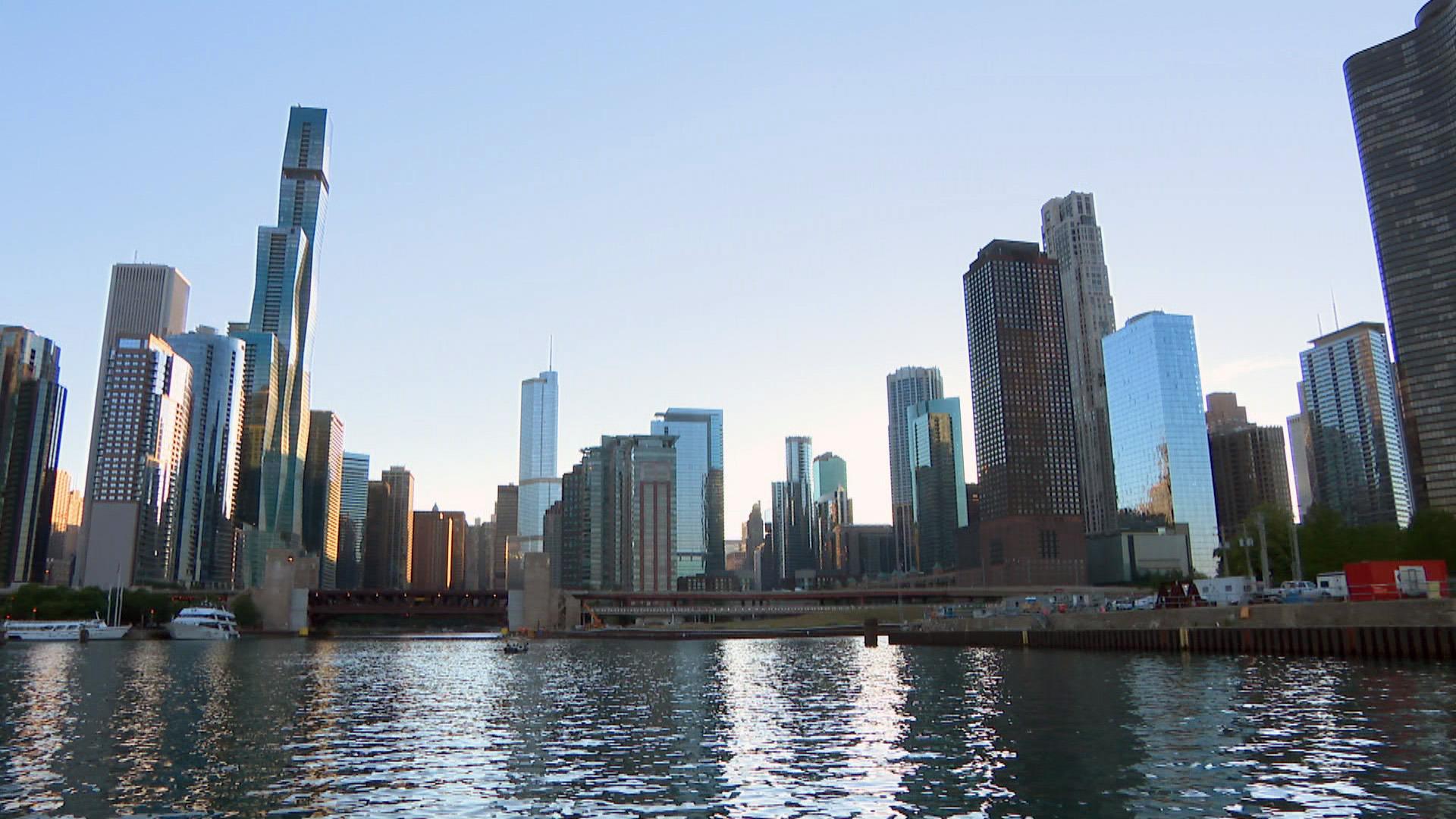 (WTTW News)
(WTTW News)
Essentially, it holds that the submerged land under Lake Michigan is too valuable a resource to sell off to a private owner and must be held in the public trust.
“The public trust doctrine entered with a big bang,” Merrill said, “but then it pretty quickly entered into a period of what we call dormancy.”
The doctrine got new attention from preservationists and park advocates,\ around the time of the environmental movement of the 1970s.
“It’s become the vehicle in recent decades … to challenge various projects like the Lucas Museum or the Obama Presidential Center,” Merrill said. “The outcomes are very mixed, it’s almost impossible to predict how the lawsuits are going to be resolved.”
The book goes deep on well-known historical figures like the legendary squatter Captain Streeter, who fought over the land that now bears his name not just with rich landowners, but with the Potawatomi and some opportunistic scammers – what Merrill calls a “wild west story.”
But the wealthy and powerful were the ones who could file lawsuits and lobby lawmakers. The causes they took up determined much of the lakefront’s destiny, in cases both large and small. One lesser-known fight covered in the book was over a makeshift lakefront ballpark once home to the Chicago White Stockings, a forerunner to the Cubs.
“The property owners didn’t like baseball being played in front of their property, so they got the local U.S. attorney to shut down the baseball club,” Merrill said.
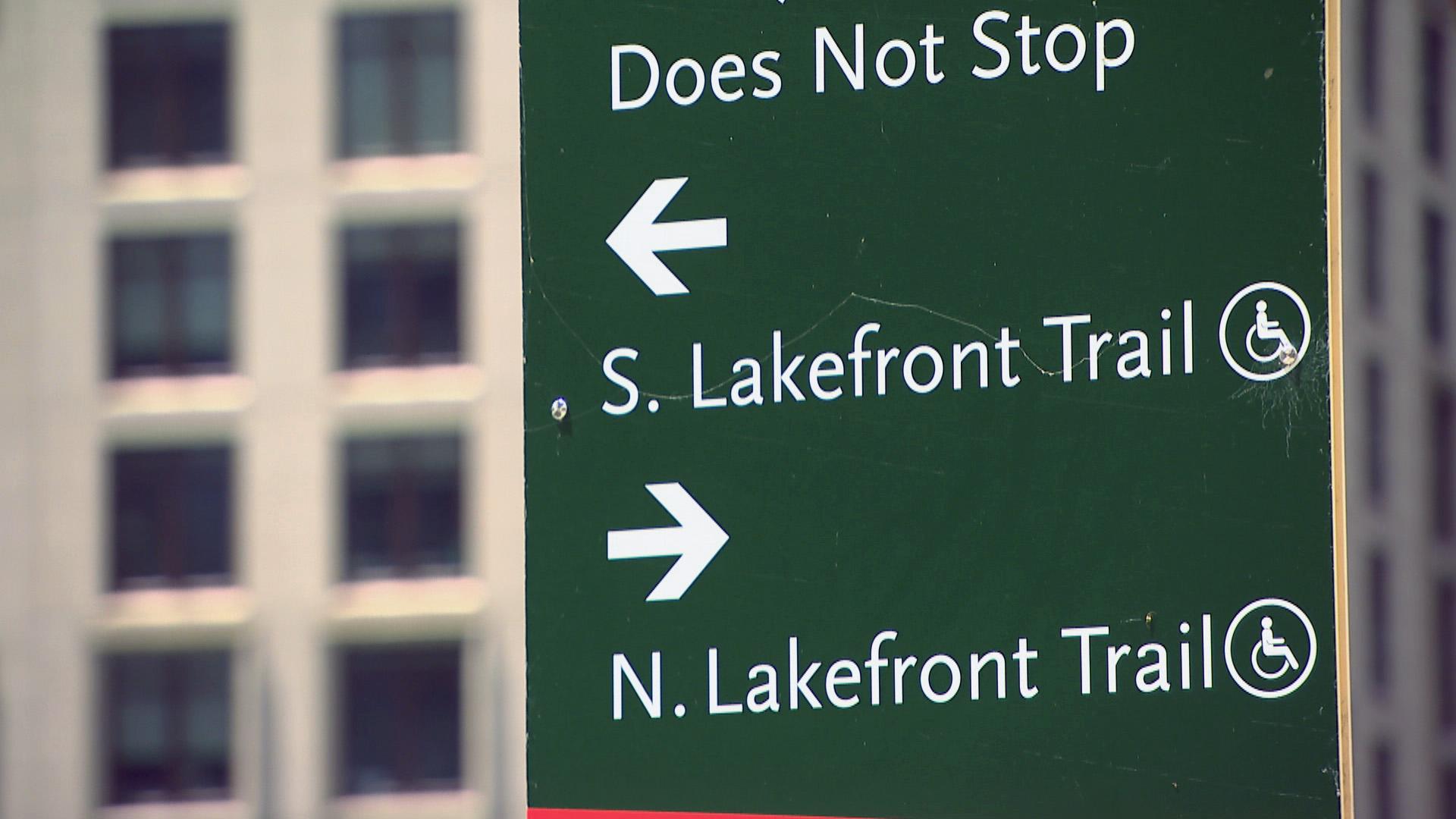 A sign directs pedestrian traffic along Chicago’s Lakefront Trail. (WTTW News)
A sign directs pedestrian traffic along Chicago’s Lakefront Trail. (WTTW News)
While both authors now live elsewhere, Merrill spent more than 20 years in Chicago. Kearney grew up in the city and says he came at the project “as the legally trained … but native Chicagoan who really wanted to understand why various things are as they are: why Lake Shore Drive ends at Hollywood on the North Side, or why the 1893 Columbian Exposition was in Jackson Park as opposed to … what we now know as Grant Park.”
In trying to answer some of those questions, the authors say it became clear that there’s never been a single master plan guiding the lakefront’s development.
“It was a series of events that could have gone one way or gone the other way, but in Chicago it ended up with a very, very splendid and happy outcome,” Merrill said.
And it’s a resource, the authors say, that demands continued vigilance so it might be preserved for future generations.
Below, the introduction to “Lakefront: Public Trust and Private Rights in Chicago.”
INTRODUCTION
 Those flying into Chicago from the east on a sunny day encounter a stunning vista. The first thing they see is a long strip of parkland, rising from the blue waters of Lake Michigan and running almost the entire length of the city from south to north. Immediately behind the parkland, a wall of glass and steel buildings thrusts upward, dramatically reflecting the greenery below. Perhaps most striking to the well-traveled eye, the line dividing the lake from the shore is remarkably free of unsightly vestiges of a rougher, more industrial past, such as rotting docks, abandoned factories and warehouses, or power plants. In this respect, the Chicago lakefront is different from the waterfront of other major cities, such as New York, London, Philadelphia, Cleveland, Detroit, or San Francisco. This book seeks to explain how Chicago came to have such a beautiful, well-tended, and publicly accessible lakefront—the city’s most treasured asset.
Those flying into Chicago from the east on a sunny day encounter a stunning vista. The first thing they see is a long strip of parkland, rising from the blue waters of Lake Michigan and running almost the entire length of the city from south to north. Immediately behind the parkland, a wall of glass and steel buildings thrusts upward, dramatically reflecting the greenery below. Perhaps most striking to the well-traveled eye, the line dividing the lake from the shore is remarkably free of unsightly vestiges of a rougher, more industrial past, such as rotting docks, abandoned factories and warehouses, or power plants. In this respect, the Chicago lakefront is different from the waterfront of other major cities, such as New York, London, Philadelphia, Cleveland, Detroit, or San Francisco. This book seeks to explain how Chicago came to have such a beautiful, well-tended, and publicly accessible lakefront—the city’s most treasured asset.
The path that led to the lakefront of today was by no means direct or inevitable. The history of the lakefront has been one of almost continual social conflict. If the disputes had been resolved differently, the lakefront would look very different today, and more like the waterfronts of other major cities.
Some of the division on the lakefront has pitted the haves against the have-nots.
For example, the Potawatomi Indians at various times claimed the filled land along the lakefront, on the ground that their rights to the lakebed had never been validly extinguished. And for many years George Wellington Streeter and his band of squatters did battle with detectives hired by real estate investors over control of the land north of the Chicago River. Streeter was remarkably tenacious, but the wealthy investors eventually prevailed and gave us the high-rise enclave called Streeterville, named in homage to the vanquished contestant. Other conflicts, such as the one over reversing the Chicago River so that it flows out of the lake rather than into it, pitted Chicagoans against the residents of other states.
The dominant form of social conflict on the lakefront, however, has been between different factions within the Chicago elite. To be sure, some of these factions have invoked the interests of the general public in support of their own cause. But the principal actors, and the driving forces behind the disputes, have been groups of wealthy and well-connected citizens who have had different visions about what should be done with the lakefront.
The first of these intramural disputes, which was not fully resolved until after the First World War, pitted the upscale landowners whose property was favored with views of the lake against various interests that wanted to use the lake for commercial development. The initial form of this dispute featured the Michigan Avenue property owners, on one side, and the Illinois Central Railroad, which had been allowed to enter the city along the lakefront, on the other. A related dispute, which involved some of the same actors, pitted the landowners against those who wanted to build an outer harbor in Lake Michigan in order to preserve Chicago’s status as a major inland port. Toward the end of the nineteenth century, the Michigan Avenue landowners faced a third challenge, as other wealthy Chicagoans and influential politicians sought to fill Grant Park, along the lakefront in the center of the city, with monumental buildings, many bearing their names.
Civic antagonism over the lakefront continued into the twentieth and twenty-first centuries, and it again largely took the form of a series of fights between rival factions of the elite. As lakefront parks spread out north and south from the city center, the commissioners of the park districts had to devise ways to overcome the opposition of riparian landowners, who prized their views and access to the lake. And with the emergence of the environmental movement, the lakefront has become the scene of renewed conflict, with those who want to preserve the existing shoreline and open park space versus those who favor using the lakefront for convention centers, expanded universities, museums, recreated football stadiums, and presidential centers. These sorts of fights no doubt will persist into the future. Figure 0.2 provides an overview of the Chicago lakefront and the sites of many of the major conflicts chronicled in the pages that follow.
Because the majority of the social conflicts over the lakefront have been waged by rival elites, the forums in which these disputes have unfolded have been legal ones. The reason is simple: the elites have had the resources to retain lobbyists and lawyers in the hope of enlisting the power of the state on their side. Efforts to influence public opinion have not been ignored, but the critical showdowns have taken place in the city council, the state and federal legislatures, and, perhaps most importantly, the courts; indeed, the lakefront has been the subject of virtually nonstop litigation from the 1850s to the present. We have mined these resources, extracting previously undiscovered or unappreciated information about the contending political forces and personalities involved in the individual disputes. We have tried to describe the legal controversies in such a way that one does not have to be a lawyer to understand the legal context of the disputes in question. But we strongly believe that one cannot fully grasp what was going on without considering the legal processes that shaped and motivated the contesting parties.
Tapping into the legal sources has several unanticipated payoffs. Perhaps most notably, it allows us to draw on a rich source of archival material that has not previously been factored into histories of the lakefront. For another advantage, it reveals certain critical changes in the law—crucial factors, as it turns out, in generating many of the conflicts that emerged over time. One of the most important was a reversal in the understanding about who owns the land under Lake Michigan. Up until about 1860, the legal understanding was that the owners of land on the shore—riparian owners—also owned the submerged land. In the 1890s, it became clear that the State of Illinois owned the submerged land. But in the thirty-some years in between, there was confusion and uncertainty about who owned the lakebed. This, in turn, helps explain much of the private landfilling that occurred during this period, by the Illinois Central Railroad and a forerunner of the US Steel Corporation among others, as well as the shenanigans over control of the area now called Streeterville.
Another legal development of general importance was the slow but inexorable development of new institutions to regulate the lakefront. At the beginning of the period covered by this book, government at all levels was weak, and at the state and local levels was often corrupt. The only way to provide public goods such as wharves, or to preserve open spaces for parks, was through lawsuits invoking the common law. Toward the end of the nineteenth century, the US Army Corps of Engineers and specially created government commissions, such as the sanitary district and the park districts, emerged as major players on the lakefront. Eventually these institutions were able to gain control of the lakefront for public use, and to prevent further illegal landfilling and squatting.
The exploration of legal sources also makes our account broadly relevant to those interested in environmental and urban history. Land that fronts on a major body of water like Lake Michigan is always vexed by tension between public and private rights. But as this book will show, it is not a simple matter to identify what sort of legal regime will strike the right balance between public and private in this context. In some circumstances, private rights—such as the right of private landowners to sue to protect their view of the water—will do more to protect the interests of the general public than will more explicitly public remedies. And defining the public interest in the waters that adjoin land is not easy. Is the public interest served or disserved by filling open water to build parks, museums, convention centers, private universities, and wharves—or railroads and steel mills that employ thousands? And which institution should make these decisions—the legislature, the city, the courts, an administrative agency, or perhaps the people themselves in a referendum?
Focusing more precisely, our history can be seen as an extended case study about one particular legal idea that emerged on the Chicago lakefront and has come to play an important role in American law more generally: the public trust doctrine. Although the outer reaches of this doctrine remain contested, at its core it protects the right of the general public to access navigable waterways. In order to resolve a major controversy over whether the Illinois legislature could grant one thousand acres of submerged land on the lakefront to the Illinois Central Railroad, and then rescind the grant four years later, the US Supreme Court in 1892 decided that such a grant would violate the public trust in which the submerged land was held. The Lake Front Case has since been regarded as the leading authority recognizing the public trust doctrine in the United States.
The public trust doctrine has become intensely controversial. Some would like to see it extended to cover all kinds of resources, from wildlife to the atmosphere to cyberspace. Others see it as a threat to the very existence of private property rights. Our account sheds important light on the circumstances that gave rise to the doctrine on the Chicago lakefront, how the doctrine has performed in its original setting relative to other legal doctrines, how it was transformed in the twentieth century, and how its legacy in protecting public resources has been mixed, in both its original and its transformed versions. We do not suggest that our account answers all the large questions about the public trust doctrine. But it will surely be of interest to those who engage in ongoing debates about it.
Even more broadly, our book can be seen as an examination of the importance of law and, in particular, legal property rights in the long-term development of an important resource like the lakefront. In the short run, the law unquestionably played a significant role in resolving many of the controversies we examine, whether through the adoption of legislation or the resolution of litigation by the courts. In the longer run, we find reason for skepticism. Some legal doctrines emerged to resolve certain controversies, only to be repudiated later on. Others emerged with great force, only to be fatally weakened, or transformed beyond recognition as time passed.
The only dimension of the law that stands out as a strong predictor of the outcome of the struggles on the lakefront is the power of possession. The Illinois Central Railroad engaged in massive landfilling on the lakefront, often (as it turned out) with no legal justification, but was allowed to keep all the improvements it actively possessed, including its former rail yard built on landfill south of the Chicago River, now full of skyscrapers. The wealthy private investors who claimed the made land in Streeterville were allowed to keep it, once they were able to oust Streeter and began developing that land with substantial structures, even if some of the land technically belonged to the state. The construction of Lake Shore Drive was made possible by low-visibility transfers of submerged land to riparian owners, who filled the land and took possession of it without any public protest. The importance of possession was intuitively obvious both to the high-priced lawyers who defended the conduct of the Illinois Central and to the scalawag Streeter, who thought that so long as he remained in possession of some portion of the reclaimed land, someday it would be his. We cannot be sure that this generalization extends beyond riparian land or even beyond the Chicago lakefront. But it suggests that greater attention should be given to possession in considering the potential significance of property rights.
Chicago has been singularly lucky in that the many social conflicts over the lakefront were resolved in the way they were. Massive landfilling of the lake occurred, but it did not ultimately detract from the beauty or value of the lake, in large part because Lake Michigan is so vast. Some structures were built on the fill, but their number was limited, in large part because of the opposition of riparian owners to losing their view of the lake. And once the park districts gained control of much of the lakefront, the structures that were built were largely dedicated to public uses. If the outcome in Chicago was largely fortuitous, part of our motivation in writing this book has been to suggest how a more deliberate mix of policies might produce similar results elsewhere. Conflicting visions and political realities will always frustrate any attempt at comprehensive planning. But understanding how particular choices conspired to produce a generally happy outcome in one particular setting may provide inspiration, or at least some cautionary tales and instructive lessons, for those who aspire to achieve the same ends elsewhere.
From the book “Lakefront: Public Trust and Private Rights in Chicago” by Joseph D. Kearney and Thomas W. Merrill. Copyright © 2021 by Cornell University Press.

